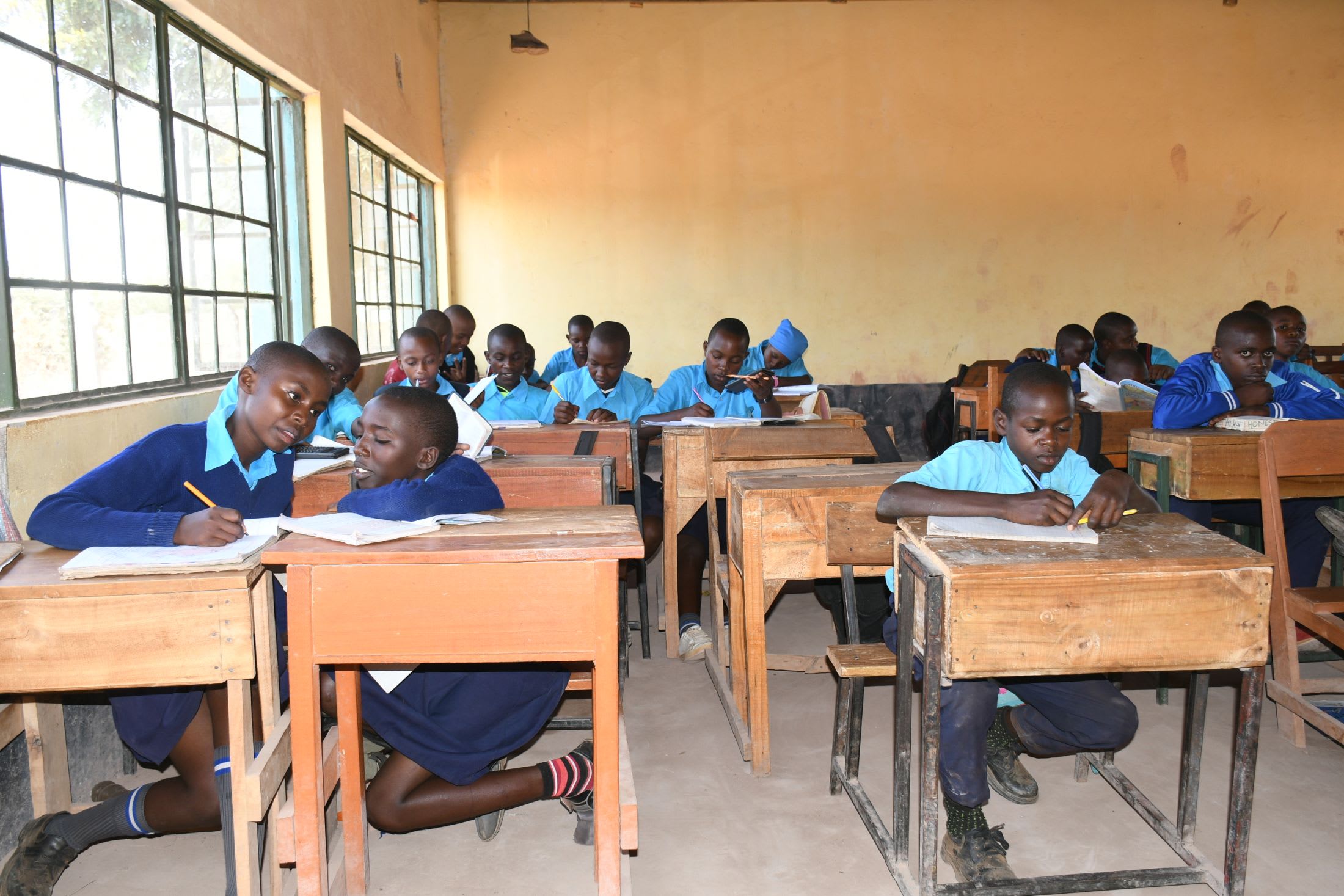At AIC Migwani Primary School, 363 students and 16 staff members struggle to access enough water each day. The water shortage severely impacts their education and daily lives and puts their futures at risk.

Students collecting water.
Unfortunately, the school's small rainwater harvesting tank is often empty. Students are forced to search for water outside the campus and bring it to school with them each morning. The water they find comes from questionable sources, with the potential to make students sick and further detract from classroom time. The last resort is purchasing water from water vendors, a costly choice both financially and because the water purchased often costs students their health.

An open water source students use to collect water.
Field Officer Alex Koech shared, "The pupils often bring water to school during the drought periods, which is very exacting considering that they carry books on their backs and a jerrycan of water in one hand. They often arrive at school late and [are] too exhausted to focus on their lessons. Offsetting the water purchases is also difficult because the school gets no funds from the government for such purchases. Besides, the vendor often delays, leading to disruptions in the school schedule. The rainwater tank in the school is also small and cannot store enough rainwater from the short rains."
54-year-old teacher Nyagah Kaumbuthu is an experienced teacher in this semi-arid region of Kenya. He understands that insufficient water creates a hardship for students and teachers alike. When they fall ill from water-related illnesses, crucial learning time is lost.

Nyagah Kaumbutu.
"We live in a dry area that experiences short rains throughout the year, and when it rains, our small tank cannot harvest enough rainwater," he shared.
"Students are forced to carry water from home every day when there is no water in school. They are also sent home to avail funds to offset the water purchases. Our students also have to live in an environment where hygiene levels are wanting, while constantly stressing about where to get water for drinking," Nyagah continued.
Nyagah's job is to provide students with a good education and help prepare them for their future so they can achieve their goals. Without access to safe, reliable water, that is nearly impossible.

Students in class.
"It is a pitiful situation because it negatively impacts the quality of life in our school. It forces the learner to be out of school, and their parents also have [to] leave their duties at home and tend to their young ones," he continued.
If the school had access to water, things would be different for everyone.
"The school would use the funds to purchase more learning materials for the learners. The parents will also no longer be required to pay the water expenses, which will create a candid relationship with the school administration," Nyagah shared.
"For students, access to safe drinking water is crucial for maintaining good health and concentration in school. Water-related illnesses often lead to absenteeism, reduced academic performance, and hindered cognitive development. Conversely, safe drinking water will support better attendance, improved focus, and overall better educational outcomes. Access to safe water will alleviate the stress and anxiety associated with water scarcity. Students and teachers will focus more on their educational goals without the distraction or worry of inadequate water supply," shared Nyagah.

Students in need of reliable water access.
"Hearing about the learners bringing water to school was sad because they are very young, and their quest for a better future is hindered by [the] lack of water. It is also very hard for them to compete with other students all over the country, given that they sit for the same national exams every year," concluded Alex, field officer.
Steps Toward a Solution
Our technical experts worked with the local community to identify the most effective solution to their water crisis. Together, they decided to construct a rainwater harvesting system.
Rainwater Harvesting System
A rainwater collection system consists of gutters that channel rainwater effectively into large holding tanks. Attached to buildings with clean, suitable roofing, these systems are sized according to the population and rainfall patterns. Water can be stored for months, allowing for easy treatment and access. Learn more here!
Handwashing Stations
Alongside each water source, we install two gravity-fed handwashing stations, enabling everyone at the school to wash their hands. Handwashing is crucial for preventing water-related illnesses within the school and community. Student “health clubs” maintain the stations, fill them with water, and supply them with soap, which we often teach them how to make.
School Education & Ownership
Hygiene and sanitation training are integral to our water projects. Training is tailored to each school's specific needs and includes key topics such as proper water handling, improved hygiene practices, disease transmission prevention, and care of the new water point.
To ensure a lasting impact, we support forming a student health club composed of elected student representatives and a teacher. These clubs promote hygiene practices schoolwide and keep handwashing stations well-stocked. This student-led model encourages a sense of ownership and responsibility.
Safe water and improved hygiene habits foster a healthier future for the entire school.

 Rainwater Catchment
Rainwater Catchment
 Rehabilitation Project
Rehabilitation Project

















